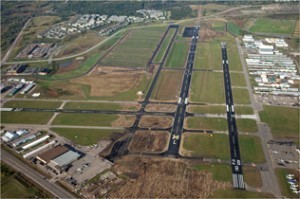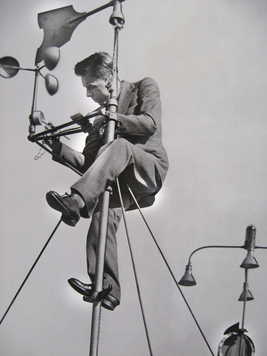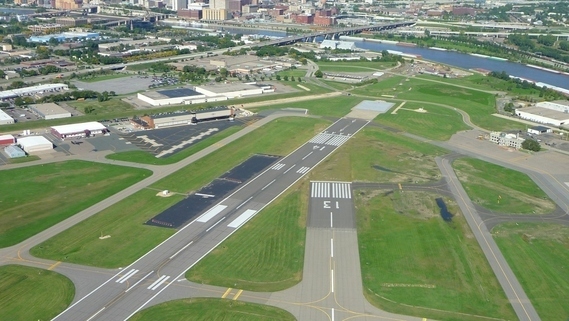 Metropolitan Airports Commission (MAC)
CEO Brian Ryks today named Naomi Pesky as the organization’s new Vice President
of Strategy & Stakeholder Engagement.
In this newly created role that reports
directly to the CEO, Pesky will create and steer multi-dimensional,
comprehensive communications, engagement and marketing strategies. She will
also lead organization-wide strategic planning and key community outreach
efforts.
“The MAC airport system is a
tremendous public asset for the Twin Cities community, the state of Minnesota
and the region,” said Ryks. “We created this new senior-level position to
better integrate our airports into community life and to oversee a focused,
vision-driven strategic planning process that fully considers the interests of
the Airports Commission and its many stakeholders.”
Pesky brings to the MAC a unique combination of corporate and
nonprofit leadership experience. Most recently, Pesky served as Vice President,
External Relations at Hennepin Theatre Trust, where she led the development,
communications and marketing teams. As a key member of the senior leadership
team, Pesky steered many enterprise-wide initiatives for the Trust, such as
guiding strategic planning and developing the vision and plans to transform a
newly acquired property into a center for hospitality, performance, education
and staff offices. Under her leadership, the Trust achieved significant growth
in fundraising revenue, ticket sales and stakeholder engagement.
Prior to the Trust, Pesky was Director
of Marketing and Communications at The Saint Paul and Minnesota Community
Foundations. Pesky joined the Foundations after a decade at General Mills,
where she held multiple marketing leadership roles. She began her career in
Chicago at Morningstar, a leading provider of independent investment research.
“Naomi’s 25 years of experience in multiple business sectors brings a creative
and dynamic approach as we enhance the MAC’s strategic initiatives and internal
and external engagement efforts,” said MAC CEO Brian Ryks. “She joins a
dynamic and diverse senior leadership team that will continue to build upon the
organization’s many strengths while positioning us for new and exciting
opportunities.”
Pesky is an active community leader, and she
currently serves on the board of Temple Israel in Minneapolis. She has a
Bachelor of Arts from Northwestern University and a Master of Business
Administration from the Ross School of Business at the University of Michigan.
Pesky was also a 2012-2013 policy fellow at the Humphrey School of Public
Affairs at the University of Minnesota.
“The MAC has built a remarkable system that
connects our region to the rest of the world. Its operations and services drive
tremendous economic impact and deliver a welcoming, first-class customer
experience to visitors,” said Pesky. “I am incredibly honored to join the MAC
and build on its successes and community partnerships to drive even greater
positive impact for our region.”
Pesky will assume her new role on May 7, 2018.
|
 The Metropolitan Airports Commission expanded its annual report to the Legislature in 2017, including information on a wide variety of topics, such as airport improvements, air service growth, new airport services and amenities, innovation and economic impacts.
It was a banner year for Minneapolis-St Paul International Airport’s (MSP) in particular, as the airport was recognized as the Best Airport in North America in its size category, notched its highest number of passengers ever (38 million) and airport staff were recognized as the best in North America, too.
Check out the 2017 Annual Report online.
The annual report also contains information on operations, airport infrastructure improvements and new air service.
|
The MAC’s six reliever airports are
small compared to Minneapolis-St. Paul International Airport, but a recently
completed economic impact study shows they have an outsized effect on the
area’s economy.
 Pictured: Flying Cloud Airport in Eden Prairie.
The study by InterVISTAS Consulting, LLC, found that the six airports generate an estimated $756 million in total annual economic output for the seven-county Minneapolis-St. Paul metropolitan area.
The six airports also support nearly 1,030 jobs directly, producing $56 million in wages, and an estimated $94 million in annual visitor spending.
The full report, which includes economic impact estimates for each reliever airport, is located at this website.
|
The Transportation Security Administration is hosting hiring
events in Bloomington for jobs that start at $16.71 per hour.
TSA employees screen passengers and property at MSP
International Airport and control entry and exit points.
When: April 26, 27 and 28, with sessions at 8 a.m., 10 a.m.,
12:30 p.m. and 2:30 p.m.
Where: The Hilton Minneapolis/St. Paul Airport Mall of
America Hotel, 3800 American Blvd. E., Bloomington MN 55425.
Attendees are asked to bring two forms of I.D.
You can apply early at this website, or
call 1-877-872-7990 for more information.
 The Minnesota Real Estate Journal recently announced its 2018 awards that showcase the top achievements and developments in Minnesota over the last year.
The winner in the Hospitality Category is the InterContinental hotel, set to open this summer at Minneapolis-St. Paul International Airport.
The Journal noted that "from its undulating glass facade to its contextual, warm tones, the new hotel is a great amenity for the airport as well as an interface between the Twin Cities and the rest of the world."
The MAC selected Graves Hospitality of Minneapolis to develop the 291-room InterContinental.
The hotel will feature its own security checkpoint and a skyway connection to Terminal 1. A penthouse level observation bar is also in the design.
The InterContinental was designed by RSP Architects and built by PCL Construction.
|
 For nearly a decade, the plaques describing the achievements
of nearly 200 inductees of the Minnesota Aviation Hall
of Fame have needed a home.
At a ceremony last weekend, they found one. The plaques from
the Hall of Fame are now hanging in the Wings
of the North Air Museum in Eden Prairie. They share space with the “Sierra
Sue” P-51 Mustang, and a Boeing Stearman biplane flown by President George H.W.
Bush during his WW II training at the Naval Air Station at Wold-Chamberlain
Field in the early 1940s, among other exhibits.
The plaques honor Minnesota men and women who were pilots,
explorers, designers and builders, said Noel Allard, the co-founder of the Hall
of Fame and its executive director.
The museum is located at Flying Cloud Airport, 10100 Flying
Cloud Dr. in Eden Prairie, Minn.
|
(Editor’s note: Following is the third in a series of articles regarding how the Metropolitan Airports Commission came into being 75 years ago, and how the commission’s airport system has evolved over the decades.)
When the Metropolitan Airports Commission first came into
existence in 1943, the organization operated Wold-Chamberlain Field (which is
now Minneapolis-St. Paul International) near Minneapolis and Holman Field in
St. Paul.
The law that created the MAC authorized the organization to
develop other airports within 25 miles of the core of Minneapolis and St. Paul.
(Later legislation expanded that
authority to within 35 miles of each city’s downtown.)
By the time WW II ended, the MAC was preparing to acquire
several area airports. As demand for general aviation flights increased in the
metropolitan area, along with commercial air service, it became clear that
Wold-Chamberlain would not have the capacity to accommodate all the area’s
aviation needs.
Following -- in order of when the MAC acquired the land for each
airport -- are brief histories of the six reliever airports in the MAC’s
system.
Modern details about each airport can be found at this website.

St. Paul Downtown Airport (Holman Field)
In its early days St. Paul competed with Wold-Chamberlain for the dominant position in airmail delivery and commercial air travel in the Twin Cities. But the formation of the MAC in 1943 also supported the ongoing development of MSP, which had more room to grow and was centrally located between the two downtowns.
Pictured: An airport employee at St. Paul's Holman Field checks a weather station in the 1920s.
For much of its history the St. Paul Airport grappled with the threat of spring floods, which have washed across the airfield many times in the last 100 years. Major floods in 1952, 1965, 1969, 1997 and 2001 all led to weeks or months without operations at the airport.
The 1965 flood was the biggest attention-grabber. The month of March 1965 was a record-setter for snow, with 51 inches falling in the St. Cloud area and 66 inches in Collegeville. A rapid springtime warmup followed, unlike this year.
|
 The modern day Downtown St. Paul Airport.
On April 16, 1965, the Mississippi River was 12 feet above flood stage at downtown St. Paul. That flood and several others provided motivation to find a long-term solution.
In 2007-08, after a lengthy planning process, a new floodwall was constructed. The floodwall has been deployed multiple times since to protect the airport from flooding.
With reliable year-round operations secured, the St. Paul Downtown Airport has seen significant new investment in recent years. That includes new hangars built by corporations, which account for about 80 percent of the airport’s operations.
St. Paul Downtown is the only MAC airport classified as an “intermediate” airport, having a runway longer than 5,000 feet. As such, it is a key base for corporate jets and business aviation.
 This 1967 aerial photo of Flying Cloud Airport is notable for the absence of development west of the airfield. Eden Prairie's population was roughly 7,000 then; today it's 64,000.
Flying Cloud Airport
In 1941 the U.S. Navy reached an agreement with Martin Grill to conduct training flights on a grass strip on his farmland in modern-day Eden Prairie. Grill later sold the site to American Aviation Inc., a private enterprise.
Originally, the airport was going to be called Southwest Minneapolis Airport. Airfield manager John Stuber gave it the “Flying Cloud” name.
With flight activity on the increase in the late 1940s, the MAC acquired Flying Cloud in 1948 and paved it the next year.
In the late 1960s and 1970s the airport was home to eight very popular flight schools, as piloting became a popular career choice for veterans returning from service in Vietnam. The airport’s location near the growing Twin Cities area also drew a steady stream of student pilots.
Flying Cloud’s air traffic in that era is hard to imagine by modern standards. Eden Prairie remained largely undeveloped in the 1960s, and in 1966 Flying Cloud ranked second to only Chicago’s O’Hare Airport as the busiest airfield in the central United States.
In 1968, Flying Cloud had 446,198 take-offs and landings, or operations. By comparison, last year MSP had 416,213 operations.
Today Flying Cloud today is primarily a recreational flying hub and also houses a number of corporate jets for businesses in the southwest metro area. The airport handles about 90,000 operations per year.
 Utility work at Crystal Airport in 1962.
Crystal Airport
In the 1920s the city of Crystal’s first airport was located near the modern-day intersection of W. Broadway and 49th Avenue N.
To make way for suburban expansion, the airport later moved to its current location north of Bass Lake Road.
The MAC acquired the airport in 1948 to serve the northwest metro area. The airport remains a popular hub for recreational flying, and has four runways: three paved and one turf – the only turf runway in the MAC system.
Crystal’s control tower is operated by federal employees and sees about 40,000 operations per year.
Lake Elmo Airport
During WW II, land not far from the current airport was used by the U.S. military for training flights.
The MAC acquired land for the current airport in 1949, paying $38,300 for 160 acres. Another 470 acres were added in 1966 to create the present-day airport.
Today Lake Elmo is a recreational and training airport, and is in the midst of an environmental assessment that involves reviewing plans to relocate a runway and realign 30th Street North.
The airport has about 25,000 take-offs and landings each year.
 Anoka County-Blaine Airport Aviation Days, 2013
Anoka County-Blaine Airport
In 1950 the MAC acquired 1,200 acres of farmland in Anoka County to develop a second major airport, which it thought would be needed in 10 to 15 years.
That grand plan never came about, but Anoka County-Blaine did develop into an important reliever airport in the MAC system.
Originally, the University of Minnesota’s flying club had land nearby the current airport but needed room to expand by the late 1940s. Both the University and the MAC ended up acquiring land that became part of the current airport.
In the late 1960s, Anoka County-Blaine Airport took 2,500 feet off the south end of the runway and added the same length to the north end, moving the runway farther away from the city of Mounds View, located to the south. A golf course on the airport’s northern edge also serves as a buffer for neighborhoods in Blaine that have been built over the years.
As part of the dispute with Mounds View, the state passed a law in the year 2000 that places a 5,000-foot limit on runway lengths for “minor airports” that is still in place today. All the MAC’s reliever airports are considered “minor” for that purpose except St. Paul.
Airlake Airport
Airlake Airport was originally a private airfield built by Bloomington-based Hitchcock Industries and open to the public.
As pilot training activity picked up after the Vietnam War with returning veterans and the GI Bill, the MAC saw a need to add an airport with an instrument landing system (ILS) for training purposes. At the time, only MSP had that equipment.
The 25-mile limit to the MAC’s authority was changed to 35 miles in the mid-1970s. That enabled the 1979 acquisition of Airlake, which is located in Lakeville, almost 29 miles from Minneapolis’ City Hall.
The Airlake acquisition came a year after the crash of an airliner in San Diego that had collided with a private plane on a training flight at the San Diego airport. The Federal Aviation Administration announced soon after that it would help improve 86 satellite airports around the country to move small planes away from major airports.
The new system at Airlake diverted about 60 training flights a day away from MSP.
The relievers adjust to changes in the air
The MAC’s reliever airports today are in a different mode of operations than they were even 15 years ago.
After the 9/11 terrorist attacks, rising fuel costs and the deep recession led to decreased flying activity. An aging base of recreational pilots is also shrinking the number of users of general aviation airports in the Twin Cities and nationally.
While the volume of recreational flying is down, business and corporate activity is up at many of the MAC’s reliever airports.
Those business clients are making new investments in the reliever airports, led by St. Paul and Flying Cloud. The MAC has also continued to improve the airports, highlighted by runway extensions at Anoka County-Blaine in 2008 and at Flying Cloud in 2009, accommodating growth in corporate traffic. Recent runway work at the St. Paul Airport reconfigured intersecting runways and improved safety.
A recently completed economic impact study of the reliever airports found that together they contribute an estimated $756 million annually to the Twin Cities-area economy, along with 1,030 direct jobs.
Broken down by each airport:
Airlake Airport (in Lakeville and Eureka Township)
Direct Jobs: 31
Total Jobs: 104
Total Economic Output $13.2 million
Anoka County-Blaine Airport
Direct Jobs: 130
Total Jobs: 560
Total Economic Output $118 million
Crystal Airport
Direct Jobs: 100
Total Jobs: 320
Total Economic Output $71 million
Flying Cloud Airport (in Eden Prairie)
Direct Jobs: 340
Total Jobs: 1,190
Total Economic Output $229 million
Lake Elmo Airport
Direct Jobs: 14
Total Jobs: 60
Total Economic Output $12.8 million
St. Paul Downtown Airport
Direct Jobs: 410
Total Jobs: 1,430
Total Economic Output $312 million
Sources of information for this article:
Minnesota Historical Society Archives.
Gary Schmidt, Director, MAC Reliever Airports.
City of Eden Prairie.
"America's North Coast Gateway," by Karl Bremer.
Board Meetings
Business Opportunities
Career Opportunities
General Aviation Airport Information
MSP Aircraft Noise Information
MSP Airport
|